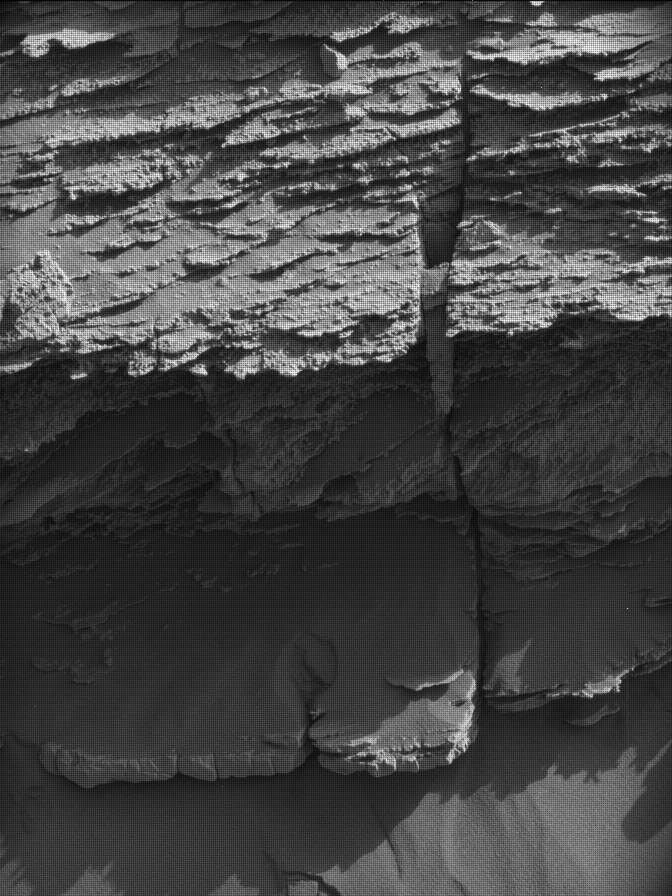Today’s workspace sports a lot of sand, which of course will be a target for our investigations. But it also has interesting looking rocks, which seem very rubbly and structured. The image above shows the area the team was looking at very closely and that has all of today’s targets.
But before I get to the details, allow me to look at a little history. Sol 3160, what an achievement, and only one other rover has ever lived that many sols on Mars. Do you remember, which one? – Of course, the Mars Exploration Rover Opportunity! Sol 3160 on her mission fell into December 2012 here on Earth, and she explored the rim of Endeavour crater; you can find out all about the investigation here. Remember, that in December of 2012, Curiosity had just landed and was three digit sol-numbers (just over 130!) back then, and had not even investigated Yellowknife Bay or done our first drill. We had seen our first conglomerates, though, right at the start, when sol number still had two digits only. Remember that? Here it is, if you love looking back in the family album of Martian rocks as much as I do.
Now, back to tosol’s activities! Curiosity has a busy weekend plan ahead. With so many interesting rocks, APXS and MAHLI are looking at two of them, the targets “Simeyrols” and “Rouffignac,” respectively. ChemCam has two LIBS active observation on targets “Pressignac” and “La Lizonne,” which are on rubbly looking rocks. Potential differences in mineralogy in those rocks are in focus of the ChemCam passive observation at “Rouffignac.” ChemCam also looks into the distance, at Rafael Navarro Mountain to study the details of the sedimentology there. Mastcam supports the observations at Rafael Navarro Mountain and surrounding area with a large mosaic, but it is also takes an image of the laser targets, and does multispectral observations at “La Lizonne,” and “Simeyrols.”
I said, ‘a lot of science,’ didn’t I? After the drive, Curiosity will make several routine observations of the clouds and dust in the atmosphere. Since it's nominally the cloudy season on Mars, cloud measurements happen more often at the moment, and tosol they include a 'Cloud Altitude Observation' where Curiosity takes a movie at zenith to watch any clouds drift by, and also look at the slopes of Mt Sharp to see if their shadows move over the slopes of the mountain. — Having both allows the team back on Earth to compute the altitude at which clouds have formed, as well as the wind direction and speed at that altitude. And on top of all that, there also is a ChemCam measurement of the atmosphere, timed to coincide with a measurement by an instrument on the European ExoMars Trace Gas Orbiter, which will be passing overhead.
Written by Susanne Schwenzer, Planetary Geologist at The Open University




































